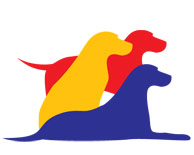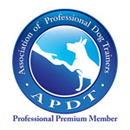In households with an older dog, the older dog, while being loved and treasured, is often unknowingly neglected. The slow-moving, sleep-all-day dog is called old. While he may be old, he does not need to act old. Your old dog just might need a little help to regain his puppy joie de vive. There are many things that can be done to help your old dog act young again.
First, take your older dog to the vet. Just because the dog is not young, does not mean the dog should limp around the house, sleep all the time, or be reluctant to play. Talk to your vet about diagnosing and treating the medical conditions that can cause your old dog to move slowly. A little medication can often make a huge difference in your mature dog’s behavior and attitude toward life.
While you have your older dog at the vet, have the vet do a health check screening on your mature dog’s blood. This kind of lab work can bring to light health issues that may affect your dog’s health and quality of life. This should be done every year, at a minimum.
Second, let’s look at the food bowl. Ok, let’s face it. You love your dog. You don’t want him to be hungry. Now he is overweight! While you are at the vet, weigh your dog. Talk to the vet about an appropriate weight for your mature mutt. Measure your dog’s food. Take him for a walk every day. Watch his weight, increasing activity and reducing his food intake until his is a healthy weight.
Third, older dogs often have very, very long toe nails. These long toe nails can deform the shape of the foot as your dog puts his feet down on the ground. Imagine you were forced to wear shoes that did not fit. Shoes you could never take off. Ouch! Have your older dog’s nails trimmed every two to three weeks. You may have difficulty with the quick. As the toe nails grow, the quick grows also. It is possible to get closer to the quick – without making the dog bleed – with a grinder instead of clippers. If your dog is difficult to handle while trimming nails, teach him to enjoy nail trimming. For more challenging dogs, the assistance of a professional trainer can help.
Fourth, older dogs can have cognitive difficulties. This may manifest itself as out-of-place whining, whimpering or barking, restlessness at night, or loss of house training. If your vet cannot find a physical problem with your dog, at veterinary behaviorist can be a great help. A veterinary behaviorist has been trained in medical issues just like your regular vet, but, unlike your regular vet, has years of additional training in animal behavior. If you think your mature dog might have cognitive problems, seek the assistance of a veterinary behaviorist.
Wait a minute, isn’t this a dog training column? Yes! The final thing you can do to revitalize your old dog is to teach your old dog some new tricks. Your mature dog can enjoy learning with you just as much as a puppy – without the nipping, chewing and peeing concerns of a young puppy. Teach your older dog fun tricks you can both enjoy. Buy a book on dog tricks or take a dog tricks class.
Revitalize your mature dog for the new year and find the joy of owning a mature adult dog.
Enjoy your old dog,
Tricia Fagan
Certified Professional Dog Trainer – Knowledge Assessed
trainer @ dogSgonegood.com (remove spaces to send an email)
(713) 557-1949



